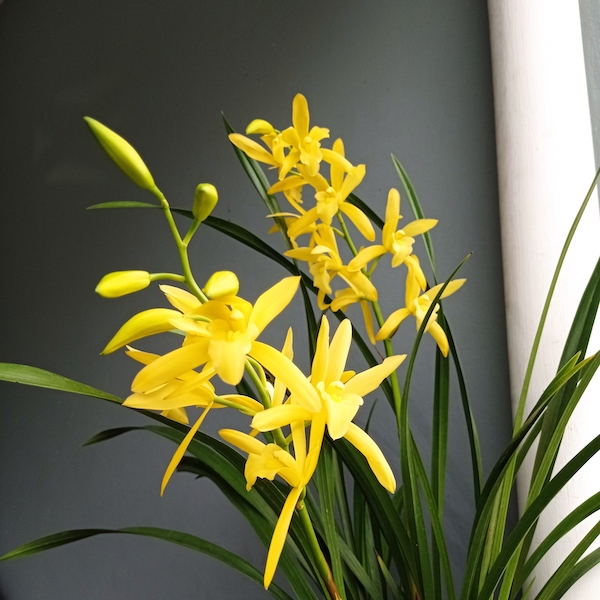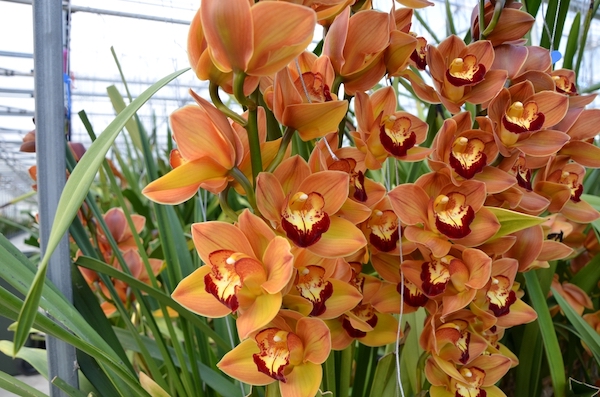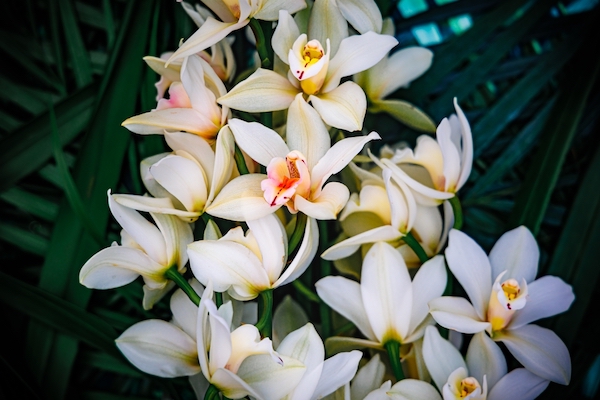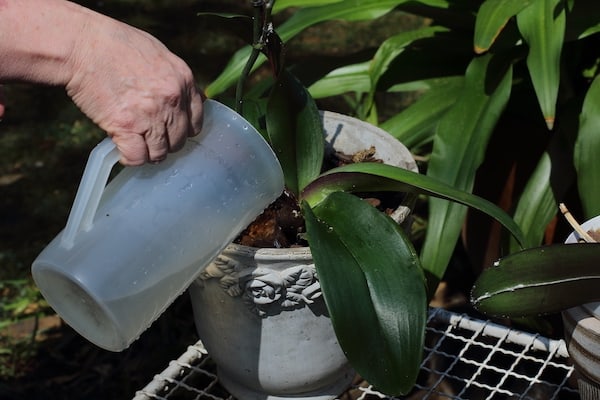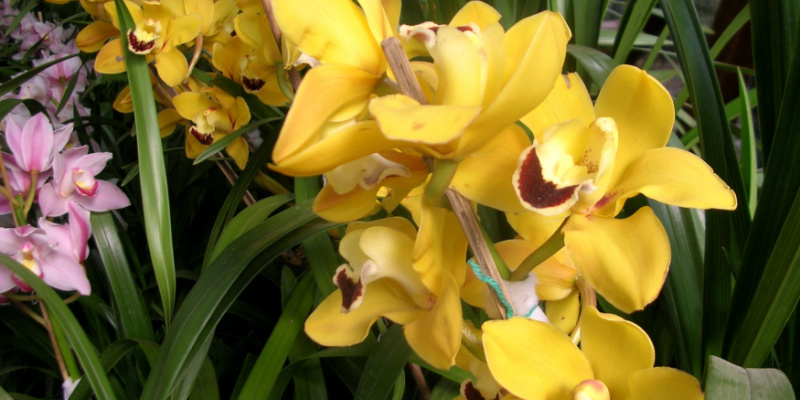
Cymbidium Orchids: The Ultimate Guide to Growing and Caring for These Stunning Flowers
Our site is reader supported, this means we may earn a small commission from Amazon and other affiliates when you buy through links on our site.
Cymbidium orchids are one of the easiest orchids to grow in your home. They do need some care and attention, especially in their daytime and night-time temperatures. These are semi-terrestrial orchids so grow in soil rather than just in air and water. Read on for how to grow and care for cymbidium orchids.
Soil
Cymbidium orchids are semi-terrestrial orchids. They grow roots on the moss on stones or below decaying leaves on the ground. Growing this type of orchid at home requires you to provide soil for it to put its roots in. The orchid plant itself will grow along the ground above the roots.
You need to put together a loose and rich organic potting mixture. The roots of this plant are thin and can’t force their way into coarse, dense and compacted soil. Many orchid growers recommend a mixture of fir bark, perlite, peat moss and other organic material.
These orchids naturally grow in loamy humus, sending thin roots into the soil. They prefer a slightly acidic soil of pH5.5 to pH6.5, though this isn’t a deal breaker. Commercial soil mixes marketed for slipper orchids (paphiopedilum) are also suitable for cymbidiums.
Light
Cymbidium orchids need good light year round, especially in winter. When they’re in their growing season, these orchids appreciate dappled sunlight – that’s sunlight filtered through the branches of a tree outdoors or a net curtain if you’re growing the plants indoors. In either location, protect the orchids from direct sunlight as this can cause the leaves and flowers to experience sunburn.
Several hours of filtered morning sun plus a shaded afternoon light is the best for these orchids. An east- or southeast-facing window is your best bet. Try to give these cymbidium orchids as much light as possible within these constraints.
You know if your plant is happy with the light its receiving if the leaves are an apple green colour. Dark green leaves indicate that it’s not receiving enough sunlight to produce good flowers; brown leaves indicate burning from too direct or strong light.
Temperature
The temperature range that you need to grow cymbidium orchids is cooler in general than for other orchids grown indoors. Not only are these orchids more tolerant of cooler environments, they prefer them.
During summer, that is, the growing season, these plants like temperatures of 26˚C to 30˚C during the day. And 30˚C is the absolute maximum temperature they should be exposed to. This temperature range allows you to keep the plants outdoors in a semi-shaded area during the day. (But gently acclimatise the plants to this change of venue.)
Cymbidium orchids need a definite change of temperature at night-time though. Ensure that their environment drops to below 20˚C to encourage flowering. However, when the plants have buds on them, keep the temperature constant at between 13˚C and 23˚C.
These orchids don’t require such warm environments during the winter. Daytime temperatures of 18˚C to 23˚C are best as are night temperatures of 7˚C to 12˚C. Winter is a dormant period for plants and so they don’t need the heat to help generate energy for growth.
Humidity
The humidity requirement of cymbidium orchids goes along with their temperature needs. Outdoors, these plants can tolerate most humidity levels except for exceptionally dry climates. Indoors, they thrive if the humidity is between 40% and 60%. Use a humidifier in the room if you have dry air, especially in winter if the central heating is turned on.
Or invest in (or make) a humidity tray. This is a tray on which you place pebbles and then put the orchid pot on. Pour some water over the pebbles but make sure that it doesn’t reach the bottom of the pot. This creates a moist environment around your plant.
And make sure that there’s good air circulation within and around the plants. This helps to prevent botrytris fungus (see Cymbidium orchid problems for details on this and how to deal with it.)
Watering
Water these plants frequently during the growing season (i.e., the spring, summer, and fall). And remember the purer the water, the healthier the plants. Use rainwater if you can, or at least boil the tap water before you use it. Accumulated salts from tap water can cause damage, such as leaf-tip dieback in which the leaf tips turn black and die. So make sure to flush water all the way through the potting mixture.
The frequency of watering of cymbidium orchids depends on the season they’re in. The growing season is in the spring and summer when they produce most of their foliage. During this time, they need a constant supply of water to keep them evenly moist throughout the potting mix.
When the pseudobulbs (these are the storage organs that appear on the stem between the leaf nodes) have finished growing in late summer, reduce the frequency of watering. And reduce watering even further during winter as the plant becomes dormant then. But don’t let the plant dry out completely.
How to water cymbidium orchids
It’s important to know how to water these orchids correctly. Here are a few tips:
- Use rainwater if possible to water your orchid; the salts in tap water can build up in the soil and cause damage to your plant.
- Don’t let the plant completely dry out; the soil should always be a little moist.
- Water when the top 3cm of the soil is dry; don’t get hung up on watering every week or so; water when the plant needs it.
- Water from above and don’t get water on the leaves or flowers; let the water run through the pot.
- Allow the excess water to drain completely out of the pot; you don’t want waterlogged soil.
Fertilizer
Cymbidium orchids appreciate fertiliser if it’s given at the proper time. But there’s some discussion as to when that is. In general orchid growers agree that during the growth time (spring and summer) fertiliser helps the plant to grow and produce blooms.
Some experts say to avoid high nitrogen fertilisers as they promote foliage growth at the expense of the blooms, while others recommend this type of fertiliser highly. Some growers state to fertilise at half strength monthly while others say to use full strength fertiliser every two weeks or so.
It’s very confusing. I think the best bet is to buy the appropriate orchid fertiliser and to follow the instructions on the box. Take note of how your orchid responds and adjust your fertilising plan accordingly.
In winter, stop fertilising all together or use the fertiliser sparingly and at half-strength on occasion.
Repotting
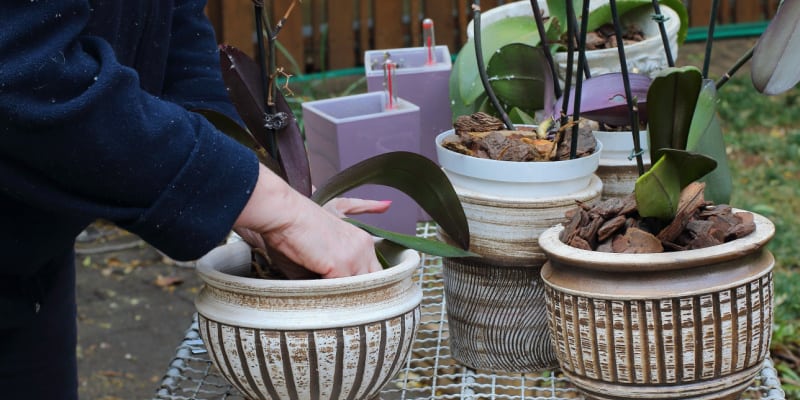
If you’re successful at growing cymbidium orchids, they’ll grow large and eventually outgrow the pot they’re in. This is when you need to report them. I have an article on how to do this. Visit How to repot a cymbidium orchid for more details.
